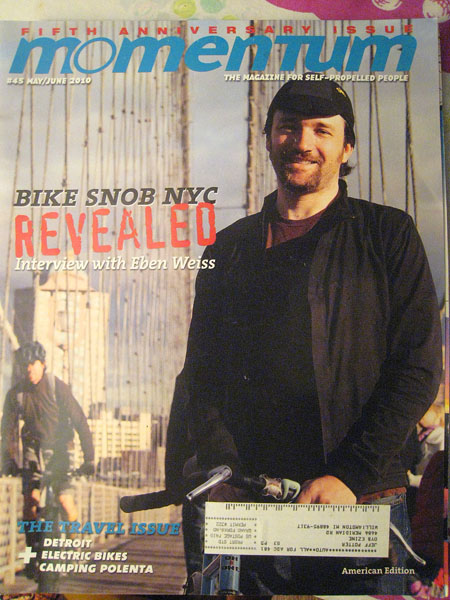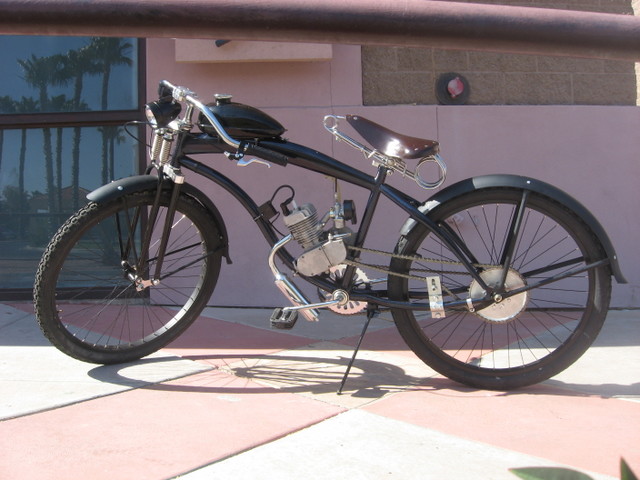People usually think that a lighter bike is better if you’re after fitness and fun. But, really, that’s not the case. If you’re after fitness, heavier is always better: in any group of riders going a particular pace the one riding the heaviest bike is the fittest. If you’re after fun the bike simply needs to work well and fit you. (A relatively heavy bike might well have a nice feel to it. It’ll merely go slower up a hill for a given effort than a lighter bike — or it’ll require more work — more fitness — to go the same speed as a lighter bike. All this is separate from fun.) Everything else, including weight, is relative and can easily be adapted to on the fun-o-meter.
For fitness, you want to exert a certain amount. A heavier bike makes it easier to do this in less time or distance. Or, for a given time and distance a heavier bike lets you exert more.
Relatively speaking, that is, when riding with others, bike weight is a tactic. Sometimes it’s even good when it’s a secret tactic. An 18-lb bike is only light when considered in terms of other riders when it is as light or lighter than the other bikes. It’s heavier if they’re all riding 14-lb bikes. If one is riding with others who are fitter than you are, bike weight might be a consideration: you might need a lighter more aero bike just to keep up. If you’re riding with others who are less fit than you, you may well want to ride a heavier, less aero bike to not leave them behind. Or, if you want to do more work that day but others don’t then bring more weight. More weight means more work means more fitness.
Lightness is good per se when you have a certain ride to do in a certain amount of time and you can’t achieve that result without a lighter more aero bike.
Some say that lighter makes for funner. Not always. The bike has to fit and feel right. A heavier bike can easily feel good or be set up to feel good. Say a light bike needs fenders, racks, lights to be good for commuting: don’t fret. If it works well for you and feels good to ride then your fitness will INCREASE to deal with the extra weight. They also say you can ride farther, so if you have a half hour for your commute with a lighter bike you can take different longer routes to do the same commute while a heavy bike would force you to take the shortest path. Sure, for a given level of fitness. But it’s easier to pile on more fitness for any given route and timeframe with a heavier bike. In fact, you need to be fitter to do the same route in the same time on a heavier bike as you would on a lighter bike.
Then, if ever you desire, once you’ve used your heavier bike to get MORE fit, you can switch to a lighter bike or lighten up your heavy bike to suddenly get more speed. Do this to give yourself a race-day boost or to ride with a faster group. But the rest of the time, by riding with your peers on a heavier bike you’re becoming more fit than they are. Then, any time you want to “put it to ’em,” suddenly strip off the weight and enjoy the boost.
Say you’re always coming in 3rd. Change to a heavier bike for awhile. On your usual group rides you won’t be as fast as usual, but try it for a few weeks. You should gradually be able to increase fitness until you’re back to where you were, but now on a heavier bike. Then lighten back up and enjoy the special treat of a 1st. Weight is just another tool to use to increase your workload. If you’re already doing most everything else, it can help put you over the top. Or, at least it’s some variety. In short, varying your bike weight can be done strategically. By no means is it the case that heavier is badder.
Sometimes weight should be stealthy. If you’re riding with rivals or peers who are sensitive to group nuances, if you show up with a loaded saddlebag they might wonder what’s up. They might change what they do. They might assume you’ll be slower. You might want to sneak in some extra work — and fitness — that they’re not getting. There’s a famous story about Victor Vincente of America and his training. He was aiming for the Olympic Team with other riders in his training group. They watched each other like eagles. When they came to a ride with light wheels, they noticed. When they were using plump, heavy wheelsets, they noticed. He developed a sneaky trick to increase his load without anyone knowing: he injected water into the inner tubes of his standard wheelset. This worked great at giving him extra training — until one day he got a puncture and water squirted out and the cat was outta the bag. Due in part to his use of a HEAVIER BIKE, VVA was the dominant racer of his era. So lighter isn’t always better.



